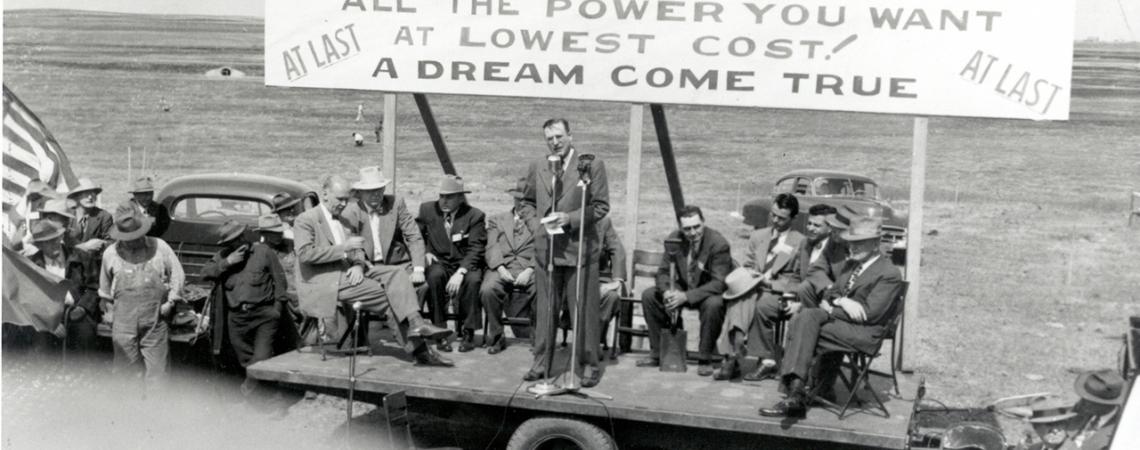Photo courtesy of NRECA
It’s a little-known fact that several Ohio agricultural cooperatives — livestock producers, dairy farmers, and crop associations — can trace their roots to the Ohio Farm Bureau Federation. The same holds true for Ohio’s Electric Cooperatives (OEC) members.
The organizations share a history that, with a flip of a switch, elevated the standard of living for thousands of rural families and farmers. That early relationship is reflected today in each group’s democratic principles and the passion with which they advocate on behalf of members.
Common constituents
There are, for instance, many Farm Bureau members who also are members of an electric co-op, and vice versa. Each organization is committed to working for Ohio’s rural communities.
“Where we cross over is with the people whom we serve. We both have our constituents in mind,” says Doug Miller, OEC’s vice president of statewide services.
Indeed. Farm Bureau Executive Vice President Adam Sharp ticks off issues the groups share: energy development, protecting property rights, workable regulations for business, and the safeguarding of Ohio’s natural resources, among others. It’s not a stretch to argue that the two contributed greatly to rural economic development over the years, he adds.
“There is a strong sense of the shared history of providing services to rural Ohio that did not previously exist, and which are critical to the development and infrastructure of rural areas,” Sharp says.
Along that line, the Ohio Farm Bureau Health Benefits Plan, launched in January 2017, harkens to its early cooperative days. In the 1920s, Farm Bureau started a mutual vehicle insurance company because mainline insurers gouged farmers on premium costs. Today, that venture is known as Nationwide Insurance.
The health benefits plan also has mutual or cooperative principles, the structure of which offers several affordable benefit plan options to Ohio-based sole proprietors and employers with between two and 99 employees. The plan operates within the agricultural food sector. Medical Mutual of Ohio administers claims processing and the provider network.
Brought on by the REA
Farm Bureau’s and OEC’s entwined path might have never been, if the federal Rural Electrification Administration (REA) hadn’t formed in May 1935 to extend electrical lines and service into greater swaths of America’s countryside. The Rural Electrification Act followed in 1936, making low-interest loans available to give electric co-ops the opportunity to build power plants.
So when the REA formed, Farm Bureau created the Farm Bureau Rural Electrification Cooperative to educate communities about the REA program, help organize their electric cooperative, access the government’s money, and supply financial, construction, and engineering assistance.

Cooperative difference
The primary motivations for Farm Bureau’s enthusiasm were that getting electricity to rural homes was a quality-of-life issue, and that investor-owned utilities either ignored pleas for service or they charged exorbitant rates.
Later that year, the first electric pole funded with REA money was erected in Miami County, and on June 15, 1936, the Charles McKenney family of Piqua became the first recipients of electrical service, provided through Pioneer Rural Electric Cooperative.
The response was immediate, and by Jan. 26, 1937, 57 rural Ohio electric co-ops existed. Overall, nearly all of the first $5.5 million disbursed by REA went to Ohio co-ops.
Soon, rural families enjoyed amenities such as electric water pumps, electric tools for farm work, and refrigeration. Monthly Labor Review wrote in April 1939 that communities celebrated the installation of electrical service with ceremonies including “the burial of a kerosene lamp as a symbol of the drudgery being abolished.”
Farm Bureau disbanded its electric cooperative affiliate in 1942 and urged existing electric co-ops to form a statewide group. In 1941, the Ohio Rural Electric Cooperative association was begun.









